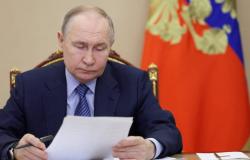Max Verstappen retired during the F1 Grand Prix of Australia, giving another driver the chance to win. This was the first time since the Singapore Grand Prix, when Carlos Sainz won. This was also what happened last weekend.
Verstappen went for his tenth win in a row in Melbourne and his third win after three races in 2024, but this attempt was hopeless after just a few laps due to problems with his brake pad. The Dutchman then had to watch as Ferrari and McLaren battled for victory, with Sainz as the eventual winner ahead of Charles Leclerc and Lando Norris. What are the most important conclusions after the race in Melbourne?
Article continues below video
ALSO INTERESTING: Sainz wins Australian Grand Prix after Verstappen’s failure and huge Russell crash
Verstappen and Red Bull are not untouchable
Red Bull Racing advisor Helmut Marko finally no longer has to answer questions about it: the chance of an undefeated season for Verstappen and/or Red Bull. Verstappen started the Grand Prix in Melbourne with an enormous series of victories, especially if you did not count the Grand Prix of Singapore. The Dutchman had won twenty races in a row, a bizarre number. However, this series came to an end last weekend in Australia. The Dutchman dropped out for the first time in two years due to problems with a brake pad, while for Red Bull it was the first time that a Red Bull dropped out since the Mexican Grand Prix in 2023. The outcome of the race and the standings in the two championships have given many fans hope, but the chance that this is false hope is quite high.
Race pace Red Bull in Australia not representative
After last weekend’s race, many people pointed to the tire degradation of the tires and the race pace, which were indeed not good statistically from Red Bul. In terms of tire degradation, Red Bull was even the team that lost the most time per lap. In terms of race pace, Red Bull was 0.5 seconds slower than Ferrari and McLaren in Melbourne, leaving many fans excited. However, McLaren itself has honestly admitted that the character of the circuit in Australia was in their favor, while at Red Bull there were two extenuating circumstances. Verstappen did not participate in the entire race, which means that the statistics are considerably lower given Verstappen’s qualities. In addition, Sergio Pérez, who drove the entire race, had a bit of tear-off under the car, which reduced performance. If Verstappen had driven the entire race and Pérez had not had a problem with his car, Red Bull would probably have been on par with Ferrari and McLaren.
Mercedes has had a dramatic weekend
It was a dramatic weekend for Mercedes. The season had not started as the British team had hoped, but the climax took place in Melbourne. Lewis Hamilton retired during the race with engine problems, an engine that suddenly decided to stop. The Brit has been completely uncomfortable in the Mercedes car for the entire season, and in fact the entire current era in F1. George Russell is feeling a bit better in that regard, but also did not reach the finish in Melbourne. After Alonso stepped off the gas in front of him, Russell reacted surprised and lost control of his steering wheel. The result was a crash and a finish behind the safety car, a finish that Mercedes as a whole would not experience.
Sauber thanks to mistakes without points
Kick Sauber is still looking for its first points in Formula 1 this season, but this was not necessarily due to the race pace. In the three races the team performed well in this area in the middle bracket. It is more the personal mistakes of the drivers and (especially) mistakes in the pit lane that cost the team a chance to possibly compete for a place in the top ten. The team as a whole does not seem to be in full shape yet, while the car certainly shows potential in terms of race pace.
Williams made the right sporting decision, morally the worst decision
The situation at Williams also provided a lot of food for discussion. Alexander Albon crashed during FP1, with his chassis so badly damaged that the car could not be used again. Since Williams had not brought a spare chassis, the team had to choose between Albon and Logan Sargeant as the driver who would enter the only car left. Williams opted for Albon, who was allowed to sit in Sargeant’s car. Albon finished eleventh during the race and would ultimately finish just outside the points. Williams’ choice was mainly focused on the sporting aspect, with the team believing that Albon was more likely to win points than Sargeant. Considering last season and this season, there is not much to argue against this. On every other level, it is of course an incomprehensible choice to reward Albon, who caused the crash himself, with Sargeant’s car, who himself had done nothing wrong.
ALSO INTERESTING: The major consequences for Williams after a crash in which Albon destroyed the chassis
Sainz and Tsunoda put themselves on the map
For Sainz, the race weekend in Melbourne was the first race weekend since his appendicitis. The Spaniard impressed all weekend, culminating in the race he won. From the start he pulled away from the competition and didn’t give them a chance to get closer. Teammate Leclerc and the McLaren drivers had to settle for places behind Sainz, who does not yet have a team before 2025 and is therefore fighting for his future in F1 this season.
The same goes for Yuki Tsunoda, who hopes to impress Red Bull Racing and Aston Martin. The young Japanese drove a stable race and crossed the line in sixth place, after Fernando Alonso had been given a twenty-second penalty. The Japanese scored the first points of Visa Cash App RB in 2024, while he has now also reached Q3 twice in a row. Tsunoda seems to have taken another step in his development, although it is still very early in the season. The Japanese also knows that he is competing for a seat for next year at Red Bull, Aston Martin or another team.

Alonso and Russell incident causes discussion
The most talked about moment of the race weekend was George Russell’s crash, which, according to Russell and the FIA, was caused by Alonso’s early braking. The Spaniard received a twenty-second penalty, which many people thought was a very severe punishment. Opinions were divided; Some people thought the punishment was justified and would even have wanted to see a heavier punishment, but some people also thought that the punishment could have been less or that no punishment was even necessary. In any case, Aston Martin and Alonso did not agree with it, but decided to challenge the penalty. The FIA seems to want to make a statement that the rules must be adhered to and otherwise the penalties will be severe.
Strategy completely absent
At the start of the race, when the hard, soft and medium tires were present on the starting grid, it looked like it could be a fascinating strategic spectacle. This turned out not to be the case, because after ten laps almost everyone had already switched to the hard tire and this would be the tire that would also be used at the second pit stop. This was, simply put, because it was the only tire that was usable and did not cause too much degradation of the tires. It made a strategic race virtually impossible for the teams, simply because everyone was in the same window and faced roughly the same relegation.
Related
Tags: Grand Prix Australia important conclusions Australian Grand Prix
-







